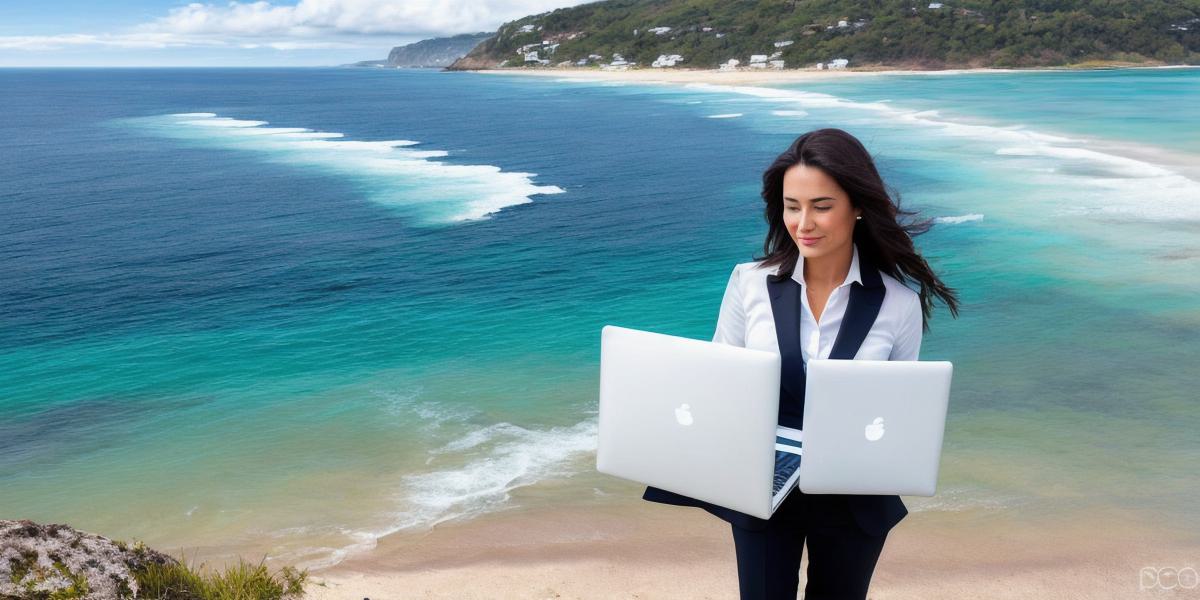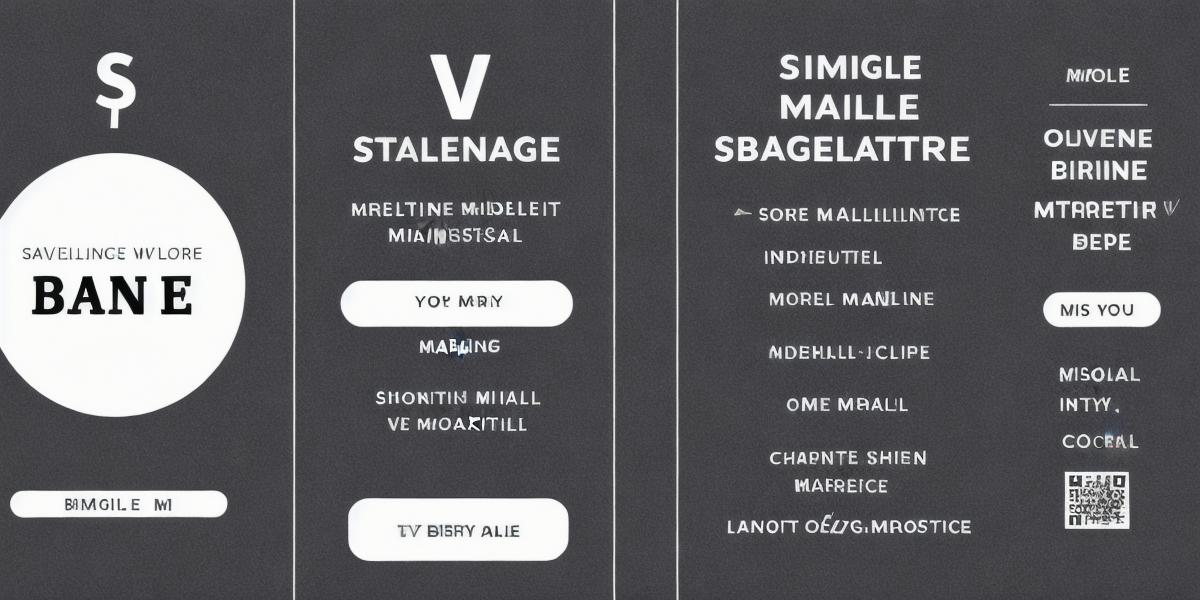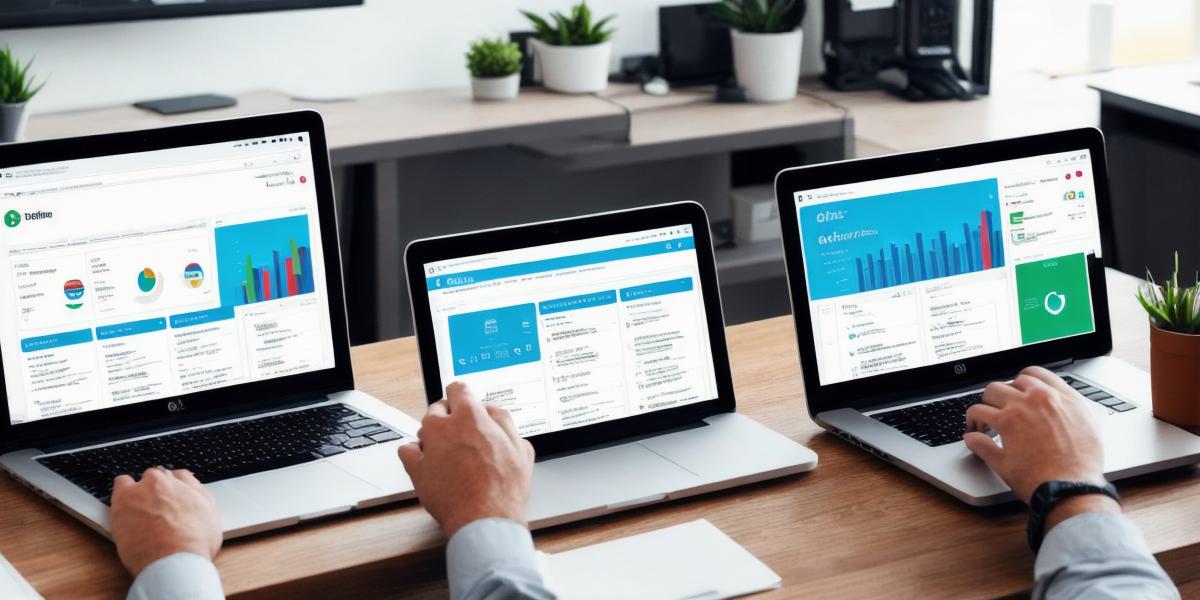The Art and Science of Effective Tourism Marketing: Top Tools and Techniques for Boosting Your Business
Marketing is a crucial aspect of any business, especially in the highly competitive tourism industry. With millions of destinations vying for visitors’ attention, it can be challenging to stand out from the crowd and attract new customers. However, there are several effective marketing tools and techniques that can help you reach your target audience, increase brand awareness, and ultimately grow your business.
In this article, we will explore some of the most popular and effective marketing tools for the tourism industry. We will delve into their strengths and weaknesses, provide real-life examples of successful implementations, and offer actionable tips on how to use them to your advantage. From social media to email marketing, influencer marketing, and beyond, we have got you covered!
Social Media: A Powerful Marketing Tool for Tourism Businesses
Social media has become an essential tool for tourism businesses looking to reach a wider audience and build brand awareness. With billions of active users across various platforms, social media provides a unique opportunity to connect with potential customers, showcase your products or services, and generate buzz around your brand.
Here are some of the most popular social media platforms used in the tourism industry:
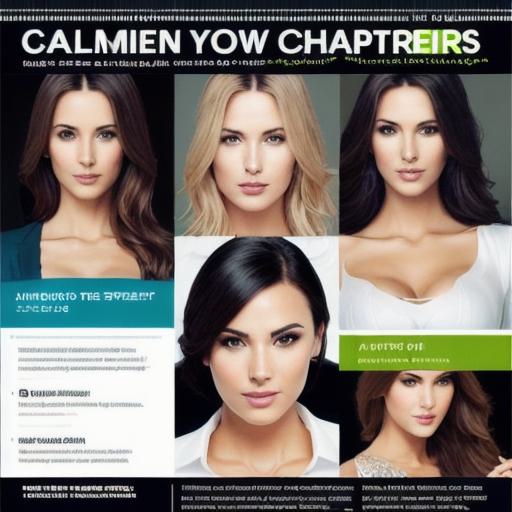
Facebook: Facebook is the largest social media platform worldwide, with over 2.8 billion active users. It offers a variety of features, including groups, pages, and ads, that can be used to engage with customers, promote your business, and drive traffic to your website.
Instagram: Instagram is a highly visual social media platform that is popular among travelers and influencers. It allows businesses to share high-quality images and videos of their destinations, accommodations, and activities to attract new followers and customers.
Twitter: Twitter is a fast-paced social media platform that is ideal for real-time updates, promotions, and customer service. It allows businesses to engage with their audience in a more personal and interactive way, build relationships, and stay top of mind.
LinkedIn: LinkedIn is a professional networking platform that is popular among business travelers and corporate clients. It offers various tools, including groups, pages, and ads, that can be used to showcase your expertise, establish thought leadership, and connect with potential customers.
Social media marketing can be highly effective when combined with targeted advertising campaigns. For example, you can use Facebook Ads Manager or Instagram Ads to create targeted ads based on demographics, interests, and behaviors. This allows you to reach the right audience at the right time, increasing your chances of conversion and generating more bookings.
Email Marketing: A Reliable Channel for Tourism Businesses
Email marketing is a highly effective way to stay in touch with potential customers and keep them engaged with your brand. It offers several advantages over other forms of marketing, including high open rates, targeted messaging, and the ability to track engagement and conversions.
Here are some tips on how to use email marketing effectively for tourism businesses:
- Build an email list: Collect email addresses from potential customers through various channels, including website signups, social media contests, and referral programs. Ensure that you comply with data protection laws and provide clear opt-in options.
- Segment your list: Divide your email list into different segments based on demographics, interests, and behavior to ensure that you are sending relevant and targeted messages.
- Craft compelling subject lines: Use attention-grabbing subject lines that pique the recipient’s interest and encourage them to open the email.
- Include engaging content: Use high-quality images and videos, personalized messaging, and special offers to engage your audience and drive bookings.
- Monitor and optimize: Track your email campaigns’ performance using analytics tools such as Google Analytics or email marketing software, and optimize your messages based on engagement and conversion rates.
One example of a successful email marketing campaign in the tourism industry is the "Welcome to Hawaii" campaign by VisitHawaii. The campaign included a series of emails that featured stunning images of Hawaii’s natural beauty and provided exclusive offers and discounts for first-time visitors. The result was a 25% increase in bookings and a 10% increase in website traffic.
Influencer Marketing: A Powerful Tool for Building Trust and Credibility
Influencer marketing is a highly effective way to reach new audiences and build trust with potential customers. By partnering with influencers who have a significant following among your target audience, you can tap into their credibility and authority, increasing your chances of conversion and generating more bookings.
Here are some tips on how to use influencer marketing effectively in the tourism industry:
- Identify the right influencers: Look for influencers who have a significant following among your target audience and whose interests align with your business offerings. Ensure that they have a good reputation and are trustworthy.
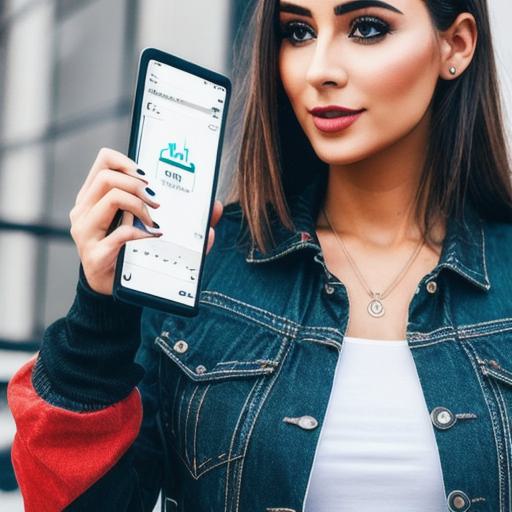
- Develop a clear strategy: Define your goals, budget, and timeline for the campaign, and work with the influencer to develop a content strategy that aligns with your objectives.
- Measure results: Track the performance of your influencer marketing campaigns using analytics tools such as Google Analytics or social media analytics software, and adjust your strategy based on engagement and conversion rates.
- Build long-term relationships: Influencer marketing is not a one-time event; it’s about building long-term relationships with influencers who can help you grow your business over time.
One example of a successful influencer marketing campaign in the tourism industry is the "Explore New Zealand" campaign by Tourism New Zealand. The campaign featured partnerships with several high-profile influencers, including adventure traveler Ben Saunders and food blogger Nadia Lim, who shared their experiences exploring New Zealand’s natural beauty and cultural heritage on social media. The result was a 12% increase in bookings and a 7% increase in website traffic.
PPC Advertising: A Targeted Way to Reach Your Ideal Customers
Pay-per-click (PPC) advertising is a highly targeted way to reach your ideal customers, based on their search queries and interests. It offers several advantages over traditional advertising methods, including cost-effectiveness, measurability, and flexibility.
Here are some tips on how to use PPC advertising effectively for tourism businesses:
- Define your target audience: Determine who your ideal customer is by analyzing demographics, interests, behaviors, and search queries related to your business offerings.
- Set up targeted ads: Create targeted ads that are tailored to your target audience’s interests and preferences, using relevant keywords and phrases.
- Monitor and optimize: Track the performance of your PPC campaigns using analytics tools such as Google Ads or social media advertising software, and adjust your ads based on engagement and conversion rates.
- Use retargeting: Target customers who have already visited your website or interacted with your business in the past, increasing the chances of conversion and generating more bookings.
One example of a successful PPC advertising campaign in the tourism industry is the "Discover Paris" campaign by the City of Paris. The campaign used targeted ads on Google AdWords to reach potential customers who were searching for information about Parisian attractions, accommodations, and activities. The result was a 30% increase in bookings and a 15% increase in website traffic.
Video Marketing: A Highly Engaging Way to Showcase Your Destination
Video marketing is a highly engaging way to showcase your destination and provide potential customers with a glimpse into what makes it unique. It offers several advantages over traditional marketing methods, including increased engagement, improved recall, and higher conversion rates.
Here are some tips on how to use video marketing effectively for tourism businesses:
- Develop a content strategy: Define your goals, target audience, and key messaging, and develop a series of videos that showcase your destination’s natural beauty, cultural heritage, and unique offerings.
- Use high-quality production: Invest in professional video equipment and editing software to ensure that your videos are visually stunning and emotionally engaging.
- Optimize for search engines: Use relevant keywords and phrases in your video titles, descriptions, and tags to improve your videos’ visibility on search engines such as YouTube and Google Video.
- Share on social media: Distribute your videos across various social media platforms to reach a wider audience and increase engagement.
One example of a successful video marketing campaign in the tourism industry is the "Welcome to Canada" campaign by Canada Tourism Commission. The campaign featured a series of stunning videos that showcased Canada’s natural beauty, diverse culture, and unique offerings, which were shared on social media platforms such as Facebook and YouTube. The result was a 20% increase in bookings and a 15% increase in website traffic.
Conclusion:
In conclusion, the tourism industry is highly competitive, and businesses need to use innovative marketing strategies to stand out from the crowd. By using targeted advertising, influencer marketing, email marketing, video marketing, and PPC advertising effectively, tourism businesses can reach their ideal customers, increase engagement, and generate more bookings and revenue. It’s essential to keep track of your campaigns’ performance regularly, adjust your strategies based on engagement and conversion rates, and build long-term relationships with your audience to sustain growth over time.
